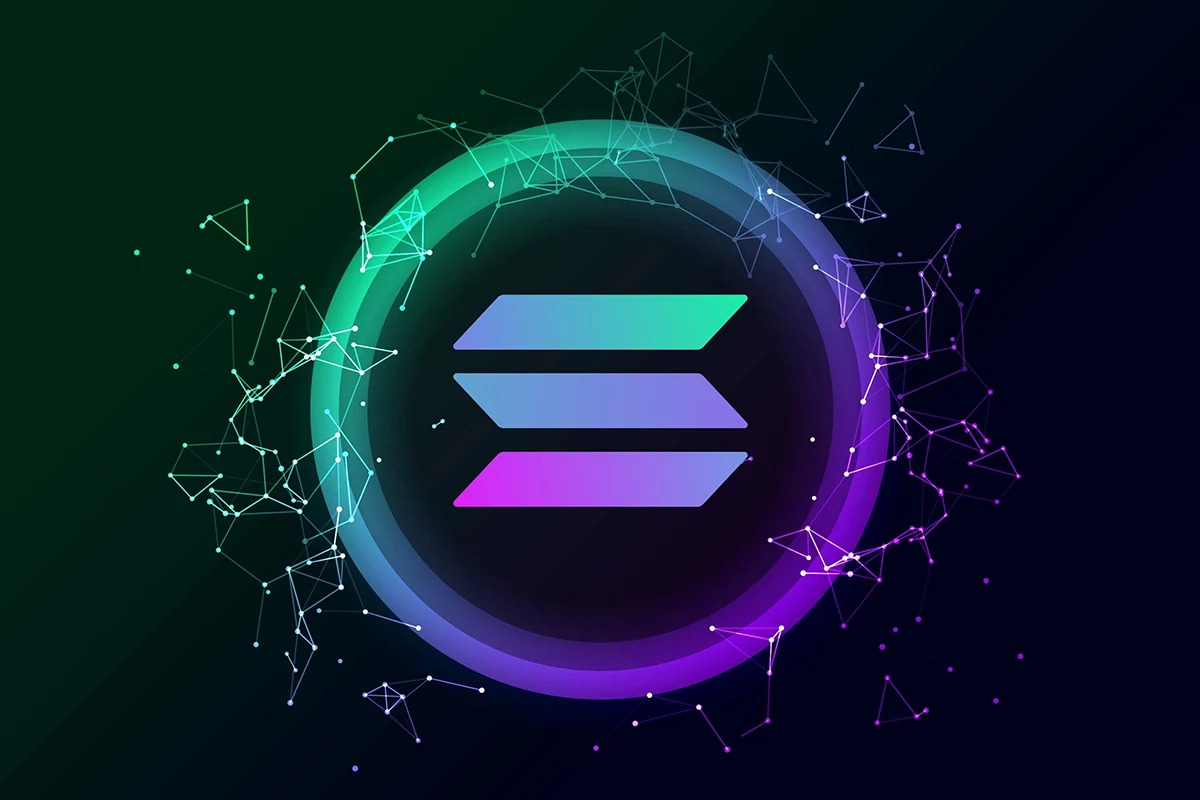The artificial intelligence (AI) revolution is happening around us as we speak, and humanity must take control of it. Otherwise, it will overwhelm us at the expense of our freedom and control over our lives. Blockchain gives us reasons to be optimistic about this, according to a new book, “The AI-Bitcoin Revolution: Building Tomorrow’s Trust Infrastructure” by Ruth Heasman.
Why is this book important right now? Because we’re running out of road to get AI alignment sorted, Heasman said. It feels both timely and urgent to get these ideas expressed in a layman-friendly format. These ideas need to be out in the mainstream in order to influence current policy proposals like digital identity, before the arrival of ASI (artificial superintelligence).
While there are some warnings about the wrong paths humanity could take with AI, the book isn’t aimed at doomers. It presents a better vision of the future, where AI systems are more open and accountable for their actions and human decisions based on their advice. Blockchain’s permanent, verifiable “ledger of truth” plays an essential role in this.
Heasman has been a prolific producer of (often Bitcoin-inspired) works, including several books and music tracks. Her previous book was “The Bitcoin Singularity,” a young-adult fiction story set in an all-too-near-future dystopian England that also explores AI themes, and its protagonist’s quest to track down a man who may well be Bitcoin’s original creator.
“I’ve been researching and writing ‘The AI-Bitcoin Revolution’ over about the past six months,” she said. “Obviously, I’ve used AI extensively to speed up the process, not least to generate the code examples that are available on the website version. I learnt a lot about BRC standards, Bitcoin Script, and Op Codes that I didn’t previously know or understand, so it has been an enlightening process.”
The AI-Bitcoin Revolution is available on Amazon (NASDAQ: AMZN) and other online booksellers. It’s also free to read online for anyone with a Replit account via the book’s homepage, where you’ll also find code snippets, a quiz to test your own knowledge, and even a business model idea generator (AI-powered, of course). An audiobook version is also on the way.
Teranode, massive blockchain scalability, provide the trust AI needs
The coming of Teranode and its 2024-25 demonstrations proving it could process 3 million transactions per second (TPS), changed everything, Heasman wrote.
“What Teranode truly represents is the death of an artificial scarcity in digital systems,” she said. Entirely new categories of applications become possible, including AI systems that can transact millions of times per second, each settled instantly with mathematical certainty.
Despite huge improvements in large language models (LLMs) in the past few years, they still lack something fundamental: accountability.
“They can’t prove their reasoning. They don’t remember truthfully. They operate in an epistemological vacuum where trust depends entirely on blind faith.”
A scalable and affordable blockchain network like BSV can converge with AI to solve problems for each industry. AI can operate transparently on a global scale, while AI in turn can provide the intelligence to make blockchain applications more accessible, intuitive, and useful.
The AI-Bitcoin Revolution references several specific projects that work with BSV: the MNEE stablecoin, which allows instantly-settled payments of any amount and makes the digital economy more accessible; the social network Treechat.ai, with its ad-free model and algorithmic transparency; and the proposed AnchorChain, designed to bring evidence and accountability to AI by logging what AIs knew at any given point in time, when/how they knew it, and how their understanding evolved. It could keep immutable records of an AI system’s memory state (4.29 billion memory records per anchor, or about 1.7 × 10¹⁶ verifiable states per second).
Heasman makes it clear that AI and blockchain could have a mutually beneficial symbiosis. Blockchain assists AI by making it more trustworthy and accountable. Should its principles become entrenched in AI development, AI would improve on blockchain’s long-stated promises. These include true digital sovereignty, privacy, and user-owned/controlled data, opening up new possibilities for financial services, supply chains, healthcare, creative platforms, and democratic governance. The book also covers concepts like vibe-coding, MCP servers, and smarter economic models (among many others), and extrapolates on the greater global picture and how AI-blockchain will transform lives. The book concludes with some practical advice for getting started in the converged industry, whether your interest is in tech, business, or policy.
Humanity must choose one of two possible futures, Heasman writes: Centralized control of our digital lives and the loss of freedom, or a more decentralized world where individuals maintain sovereignty and trust without weakening either.
“BitGenius.net (or should I say Babbage) has been heaven-sent for checking concepts, wording, and code, and is a great tool for anyone starting as a coder, as has the BSV MCP server and agent tools that are now available,” Heasman said.
Back to the top ↑
AI-blockchain lessons from London Blockchain Conference 2025
CoinGeek caught up with Heasman at the recent London Blockchain Conference to hear some well-researched thoughts on the ways blockchain could enhance and improve AI, as well as her impressions from the event.
Asked about her main takeaways from the London Blockchain Conference 2025, Heasman recalled conversations with business analyst Dr.-Ing. Wolfgang Lohmann, and the presentation by Elas Founder Brendan Lee. In fact, these presenters even triggered a few revisions to the book.
“One of the concepts I updated/added to the book after the conference was something that Wolfgang Lohmann said. He made the point that by adding property rights to a satoshi, a single satoshi can become worth far more than an entire Bitcoin! Each satoshi becomes a vessel for ownership, a carrier of rights that can be transferred, split, combined, and tracked with the same certainty as the currency itself.”
“This is what we mean when we say the metanet (or Web3) is an Internet of value, and that value can be owned by individuals as easily as it can by corporations, democratising IP ownership and earning potential. This is a powerful and welcome change, especially in a rapidly evolving economic environment, driven by potentially exponential advancements in AI.”
Back to the top ↑
Origin Exchange and SonicAI—blockchain and AI singing the same tune
Another presentation that stood out at the London Blockchain Conference was Lee’s talk on Origin Exchange (coupled with SonicAI). It’s a working example of that single satoshi (inscribed as a token) representing a vessel for ownership, and theoretically limitless value as a result.
Lee described SonicAI’s ability to identify specific audio signals, even within other works, as the only existing AI example of a “golden ear.” It can be used to embed a watermark on the signal that records it as the creator’s IP forever. This acts as a check on new works produced using generative AI—any data can be traced back to its original point of creation and its original creator. This is an acknowledgment that, while generative AI can and does produce original works, all of them are based on material once created by humans.
Origin Exchange then brings “the extreme power to fractionalize” rights for this intellectual property. Rather than handing all IP ownership to large media companies forever, individual fans and investors could drive the creative economy by buying tokenized shares based on SonicAI’s watermarks. The royalty collection and payout process is automated, tokenized shares are tradeable and can change in value over time, forever.
Though SonicAI is aimed at musicians, it’s actually “data agnostic,” Lee said, so there’s no reason similar watermarks couldn’t be embedded in any kind of data an AI might decide to use. Likewise, the concept behind Origin Exchange could also be applied to record IP and fractionalized rights in other creative fields, as well as in academic research, data-gathering, and business.
“(Lee’s presentation) probably caught my attention the most because I’ve published several albums this year myself and know the frustration of unfairness and opacity of royalty collection and distribution,” Heasman said. “Musicians really are getting a terrible deal in recent years, often spending more making their music than they ever receive in compensation.”
Back to the top ↑
What’s a young, career-oriented person going to do?
Entering the workforce at the cusp of the AI revolution sounds like a daunting prospect for younger people currently studying at school or university. Will the career they’re chasing even exist in a few years’ time, or are they in danger of being replaced by software (even if that software has blockchain enhancements)? How could we possibly advise them on what to do—that is, other than become career investors in fractionalized music IP?
“Probably what I’ve said to my own kids—learn and ride the wave of AI by using it daily, as it’s the best leverage both for multiplying your impact and productivity and for guaranteeing future employment,” Heasman said.
“But don’t forget to listen to your own inner voice, knowledge, values and principles. AI shouldn’t be relied upon as a source of truth (at least not at the moment), but it is a fantastic productivity tool and, frankly, a lot of fun! So enjoy it as we also try to figure out how to keep it benign and useful, not overpowered and dystopian.”
In order for artificial intelligence (AI) to work right within the law and thrive in the face of growing challenges, it needs to integrate an enterprise blockchain system that ensures data input quality and ownership—allowing it to keep data safe while also guaranteeing the immutability of data. Check out CoinGeek’s coverage on this emerging tech to learn more why Enterprise blockchain will be the backbone of AI.
Back to the top ↑
Watch: Demonstrating the potential of blockchain’s fusion with AI
title=”YouTube video player” frameborder=”0″ allow=”accelerometer; autoplay; clipboard-write; encrypted-media; gyroscope; picture-in-picture; web-share” referrerpolicy=”strict-origin-when-cross-origin” allowfullscreen=””>
Source: https://coingeek.com/the-ai-bitcoin-revolution-is-here-are-you-ready/


